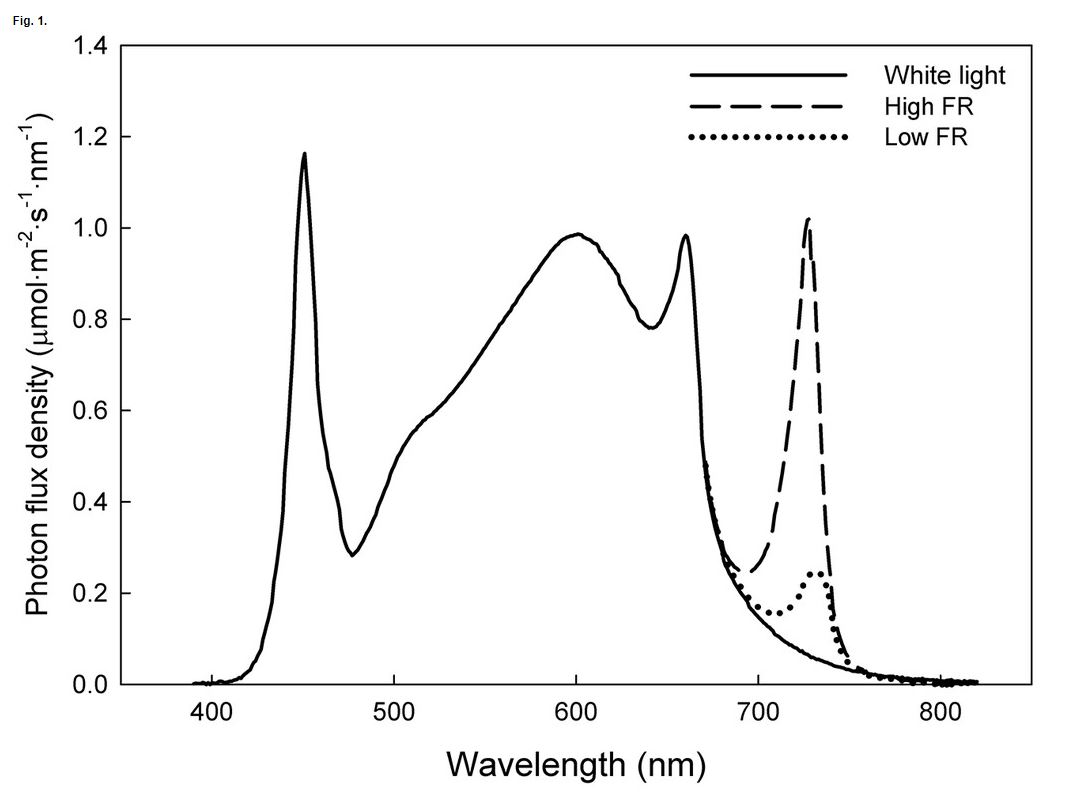Supplemental Far-red Light Research of Foxglove Seedlings
Foxglove seedlings were exposed to different supplementary far-red light treatments, and Apogee's SS-110 quantified the amount of PPFD and far-red light in each treatment. The researchers found that additional far-red light significantly increased root growth. This implies that supplementary light can shorten the cropping cycle of foxglove seedlings, since seedlings with better root growth can be transplanted sooner. The researchers also found that supplementary far-red light increased shoot dry weight and other plant metrics associated with increased photosynthesis.
Read more about the research below.

ABSTRACT: Seedlings may be grown indoors where environmental conditions can be precisely controlled to ensure consistent and reliable production. The optimal spectrum for production under sole-source lighting is currently unknown. Far-red light (λ = 700–800 nm) typically is not a significant part of the spectrum of light-emitting diode (LED) grow lights. However, far-red light is photosynthetically active and can enhance leaf elongation, which may result in larger leaves and increased light interception. We hypothesized that adding far-red light to sole-source lighting would increase the growth of ‘Dalmatian Peach’ foxglove (Digitalis purpurea) seedlings grown under white LED lights, potentially shortening production times. Our objective was to evaluate the effect of far-red light intensities, ranging from 4.0 to 68.8 µmol m−2 s−1, on the growth and morphology of foxglove seedlings. Foxglove seedlings were grown in a growth chamber with a photosynthetic photon flux density (PPFD) of 186 ± 6.4 μmol m−2 s−1 and supplemental far-red light intensities ranging from 4.0 to 68.8 µmol m−2 s−1. As far-red light increased, shoot dry weight, root dry weight, plant height, and plant height/number of leaves increased by 38% (P = 0.004), 20% (P = 0.029), 38% (P = 0.025), and 34% (P = 0.024), respectively, while root weight fraction decreased 16% (P = 0.034). Although we expected supplemental far-red light to induce leaf and/or stem expansion, specific leaf area and compactness (two measures of morphology) were unaffected. Because a 37% increase in total photon flux density (PPFD plus far-red light) resulted in a 34.5% increase in total plant dry weight, the increased growth likely was due to increased photosynthesis rather than a shade-acclimation response. The growth response was linear across the 4.0 to 68.8 µmol m−2 s−1 range of far-fed light tested, so we were unable to determine a saturating far-red photon flux density

Fig. 1. Spectral distribution of white light-emitting diode (LED) bars with added low or high amounts of far-red FR light.
